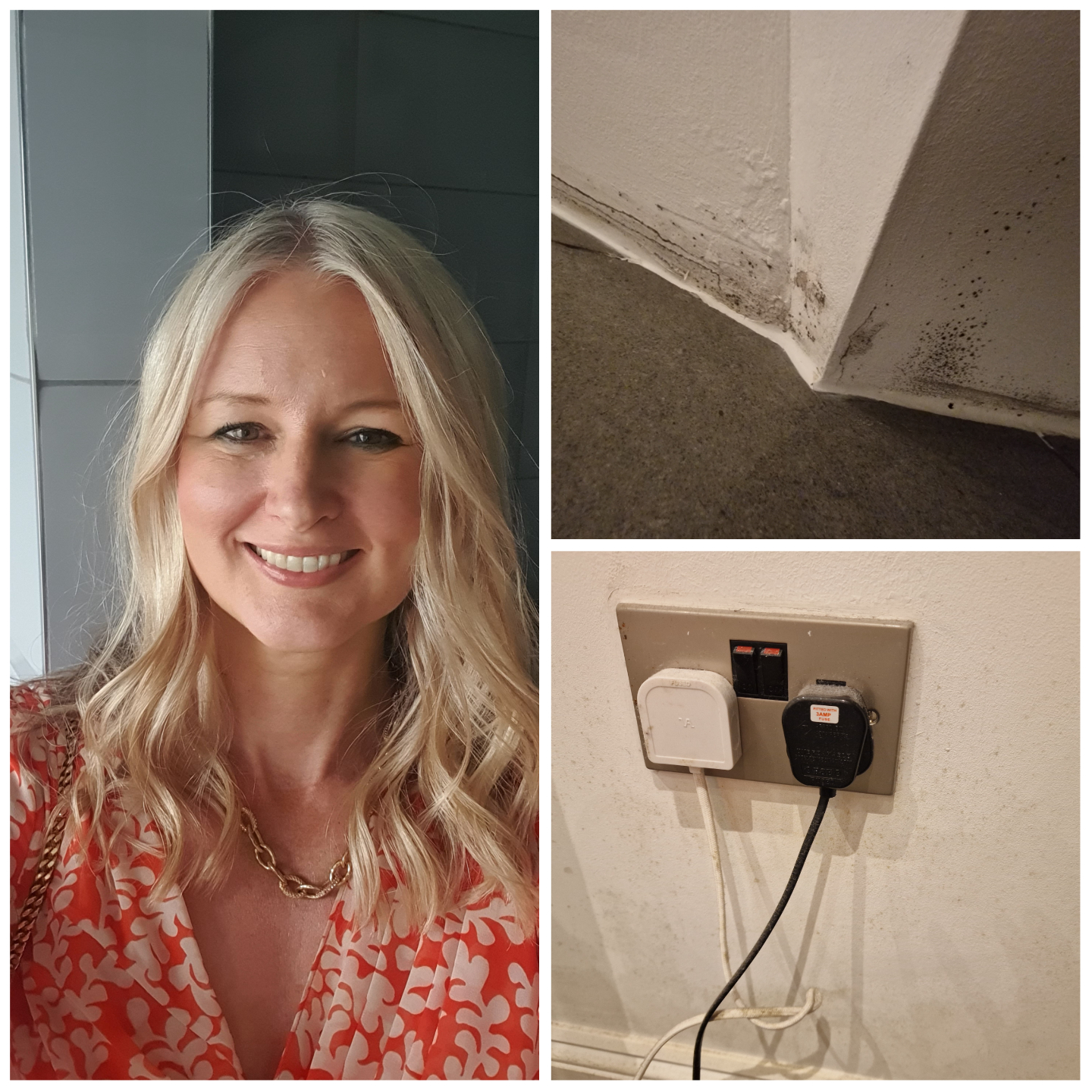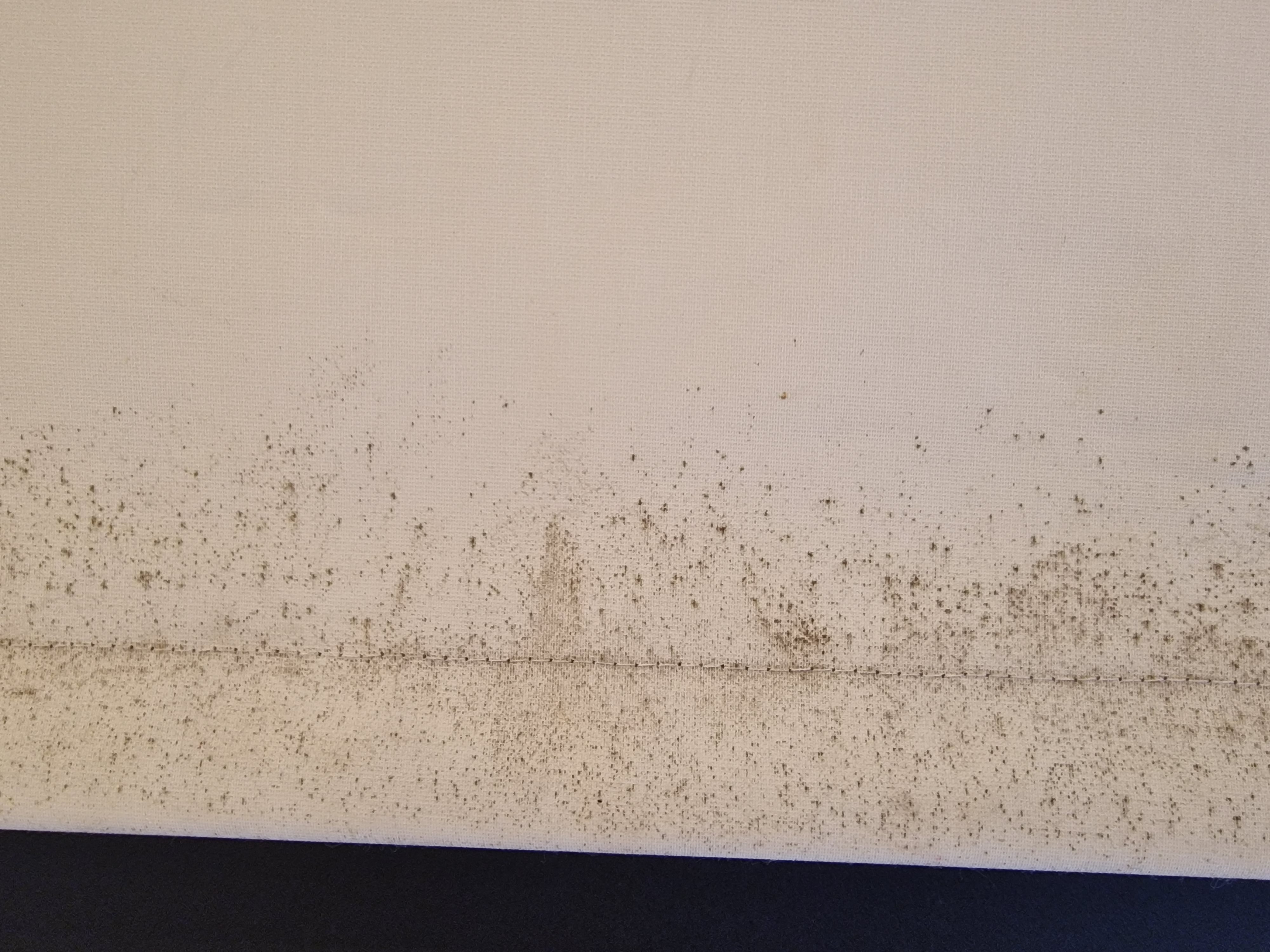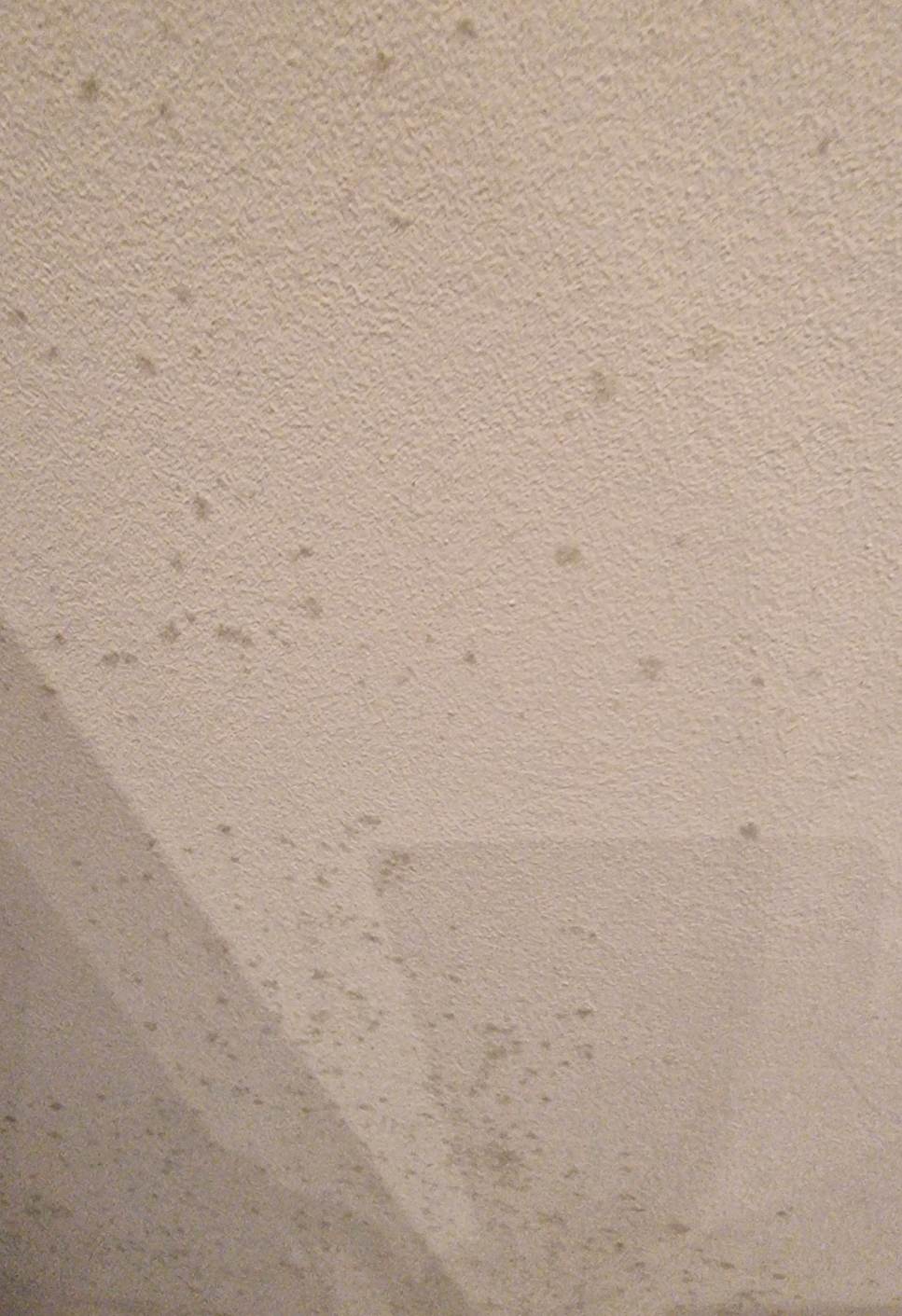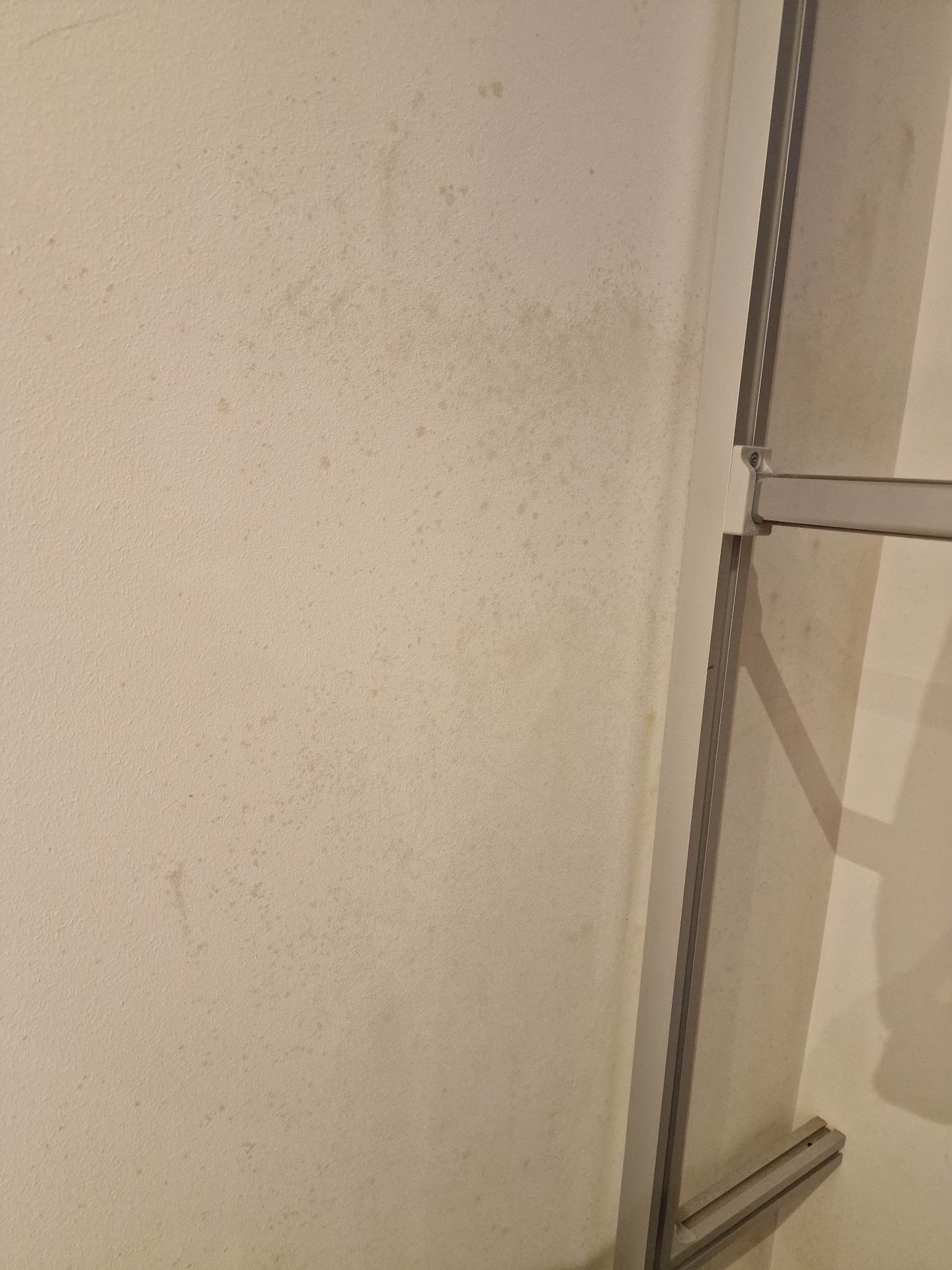'I've lived with black mould and damp in my home for a year'
Beth McLoughlin says she has struggled with mould in her home in Blackheath, London, since November last year due to penetrating damp

Damp and mould in a home are more than just unsightly nuisances. Living in a property affected by black mould and heavy condensation can seriously impact both your finances and your health.
Mould and dampness are caused by excess moisture, which can come from leaking pipes, penetrating damp in basements or ground floors, or rain seeping in because of damage to the roof or around window frames. Excess moisture indoors can also be caused by window condensation.
Journalist and copywriter Beth McLoughlin has struggled with dampness and mould in her home in Blackheath, London, for over a year. She spoke to Sam Webb about how the infestation has had ramifications on her love of boxing and even her mental well-being.
“I felt powerless”
Beth first became aware of the issue when she moved into the maisonette in June 2021. Her new neighbours asked if she had seen any damp as the situation had become so bad for them, they had mushrooms on the ground floor.
“It was newly painted so I didn’t see it right away, but after a while, it started to show,” she said. “Last November I started noticing black mould on the walls and blinds. I had to throw a pair of shoes away because they went mouldy in the cupboard.
“I had a dehumidifier running all day and each day would empty out a lot of water.
“I noticed I was wheezing when I was sparring, even though I train a lot and shouldn’t have struggled. It got me really down and I felt powerless about it.
Get the Homebuilding & Renovating Newsletter
Bring your dream home to life with expert advice, how to guides and design inspiration. Sign up for our newsletter and get two free tickets to a Homebuilding & Renovating Show near you.
“As soon as it got colder there would be mould all over the walls and blinds.”
Beth claims both the landlord and the rental agency either minimised the problem or suggested it was her fault for not airing the property, a claim she denies.
She said: “I ended up staying at people’s houses as I didn’t want to be there breathing it in. It smelled and I didn’t sleep well. I don’t feel like I’ve got a home as it is not a safe and relaxing place to be.”

How ignoring mould can harm you and your home
Moulds produce allergens (substances that can cause an allergic reaction), irritants and, sometimes, toxic substances, according to the NHS website.
Inhaling or touching mould spores may cause an allergic reaction, such as sneezing, a runny nose, red eyes and skin rash. Mould can also cause asthma attacks.
If you have mould or damp, or black mould in bathrooms, it's important to find out why you have excess moisture in your home. When you know what's causing the damp, you can make sure your home is repaired or take steps to limit the moisture in the air. You may need to get a professional to remove mould for you, but if it's only a small amount you may be able to remove it yourself.
In Beth's case, she says the cause of the mould in her home is penetrating damp. It means that no matter how much she cleans it off, because the wall is constantly sucking up moisture from the wet ground, the mould keeps coming back.
Damp can cause costly damage to the property’s structure, such as brickwork - which can disintegrate when wet for long periods - plaster, and wood, over time. It can also ruin furniture, causing wood to swell as well as staining the fabric.
Leaving damp and mould just makes the problem worse and potentially even more costly to fix due to the damage it causes.


How ignoring damp and mould can be costly
For Beth, her situation is on-going, with no sign of any works being scheduled to fix the penetrating damp problem despite the risk of causing more damage to the building. But mould and damp can be easy to fix.
Simon Mead is an expert on mould and runs the Midlands-based damp proofing and timber preservation company Cyteq. He says there are three main causes of damp. The first is condensation, which is caused by water vapour, and is generated by household activities like cooking and bathing. Check out our guide on how to stop window condensation, if this is a problem in your home.
Then there is penetrating damp, which is when an external source of moisture finds its way indoors through a fault, such as cracked brickwork.
Finally, there is penetrating damp, when moisture from the ground is absorbed by the walls or floors.
If the damp comes from a structural issue, it will require work on the house to tackle the leak and then extensive damp-proofing work by a professional, which involves chemical sprays to kill the mould and then waterproofing agents.
Simon adds that many people are turning to positive input ventilation, a ventilation system which works by pushing harmful air out of the home and replacing it with fresh, filtered air.
He said: “As soon as the moisture is out of the air, you don’t have pathogens or allergens in the air, and heating bills come flying down because you’re not paying to heat heavier air.
“It usually pays for itself in two years, but in the current climate it’s more likely to be a year.”
Mould is sometimes caused by something as simple as replacing a bath or shower seal. For example, Homebuilding and Renovating's Amy Willis went around to her neighbour after water started coming through the ceiling of her terraced house from next door. Phone calls to next door's property manager went unanswered fso she went and tried to fix the problem for them (and her home) herself.
She said: "Going into their home, there was a nasty smell of damp and a large black patch of black mould on their kitchen ceiling spanning a good metre and a half wide. They said it had been like that for months. I asked if I could take a look above and when I did, I could see that it was simply because the silicone seal had come away around the bath and water when they used ,it seeped through.
“I went and got my silicone gun and fixed the problem straight away for them. Sometimes the cause can be simple but the damage caused by ignoring it can become expensive. That ceiling in their kitchen was nasty but totally avoidable in terms of the costs required to fix it."
Sam is based in Coventry and has been a news reporter for nearly 20 years. His work has featured in the Mirror, The Sun, MailOnline, the Independent, and news outlets throughout the world. As a copywriter, he has written for clients as diverse as Saint-Gobain, Michelin, Halfords Autocentre, Great British Heating, and Irwin Industrial Tools. During the pandemic, he converted a van into a mini-camper and is currently planning to convert his shed into an office and Star Wars shrine.

